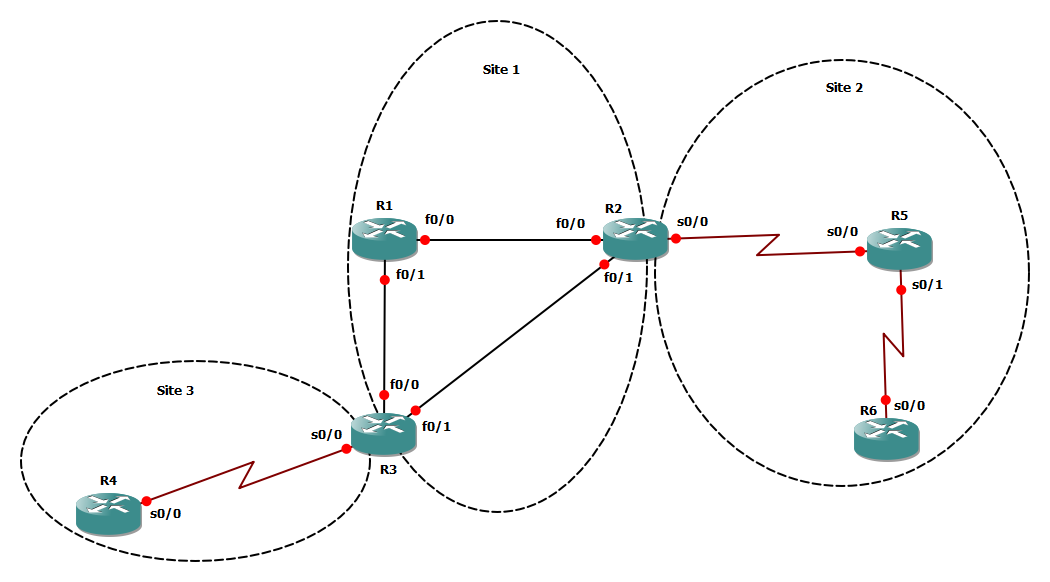In this example the network show that there is 3 logical Sites :
R1
Fa 0/0 2001:db8:1::/48
Fa 0/1 2001:db8:1::/48
R2
Fa 0/0 2001:db8:1::/48
Fa 0/1 2001:db8:1:/48
Se 0/0 2001:db8:2::/48
R3
Fa 0/0 2001:db8:1::/48
Fa 0/1 2001:db8:1::/48
Se 0/0 2001:db8:3::/48
R4
Se 0/0 2001:db8:3::/48
R5
Se 0/0 2001:db8:2::/48
Se 0/1 2001:db8:2::/48
R6
Se 0/0 2001:db8:2::/48
Then for each interface of each router you add the proper Subnets ,
R1
Fa 0/0 2001:db8:1:2::/64
Fa 0/1 2001:db8:1:3::/64
R2
Fa 0/0 2001:db8:1:1::/64
Fa 0/1 2001:db8:1:2::/64
Se 0/0 2001:db8:2:1::/64
R3
Fa 0/0 2001:db8:1:1::/64
Fa 0/1 2001:db8:1:3::/64
Se 0/0 2001:db8:3:1::/64
R4
Se 0/0 2001:db8:3:1::/64
R5
Se 0/0 2001:db8:2:1::/64
Se 0/1 2001:db8:2:2::/64
R6
Se 0/0 2001:db8:2:2::/64
Then you add the Interface ID in this example you can choose the router ID
R1
Fa 0/0 2001:db8:1:2::1/64
Fa 0/1 2001:db8:1:3::1/64
R2
Fa 0/0 2001:db8:1:1::2/64
Fa 0/1 2001:db8:1:2::2/64
Se 0/0 2001:db8:2:1::2/64
R3
Fa 0/0 2001:db8:1:1::3/64
Fa 0/1 2001:db8:1:3::3/64
Se 0/0 2001:db8:3:1::3/64
R4
Se 0/0 2001:db8:3:1::4/64
R5
Se 0/0 2001:db8:2:1::5/64
Se 0/1 2001:db8:2:2::5/64
R6
Se 0/0 2001:db8:2:2::6/64
1. Configure loopback address on each router
2. Enable ipv6 routing
3. Configure the routing : ipv6 router ospf “Process ID”
4. Configure the Router-ID
5. Enable OSPFv3 on each interface .
6. Verify:
Show ipv6 ospf Interface
Show ipv6 ospf neighbor
SHow ipv6 route








